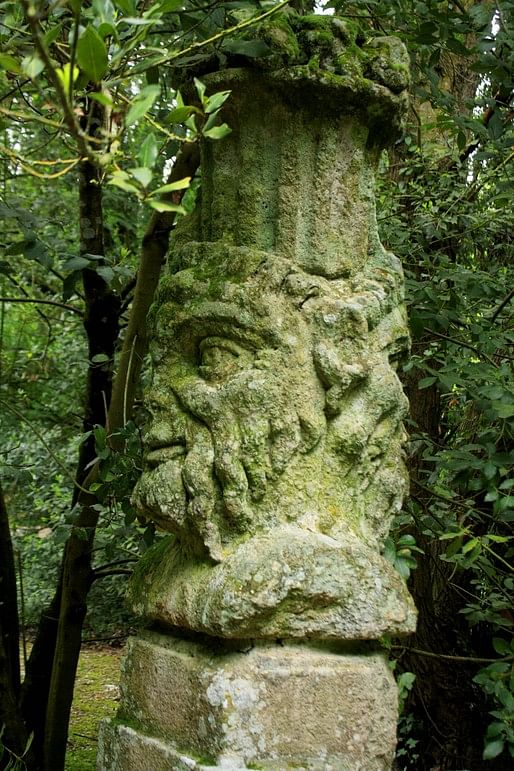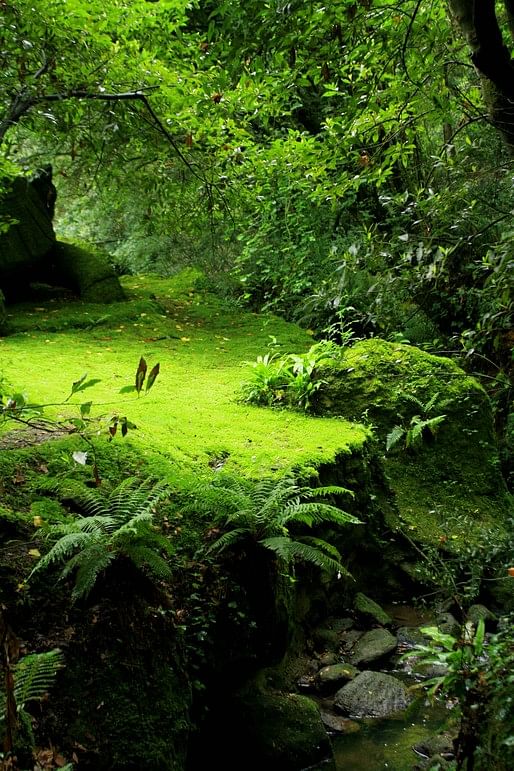
The Sacred Woods (Sacro Bosco) in Bomarzo, Italy has held an air of enchantment about it since its rediscovery in 1942. In 1542 Count Pier Francesco Orsini (1513? – 1584), a military captain, inherited this land and began cultivating a garden of bizarre proportions, both in size and design.

Parc di Mostri (or Monster Park), a mannerist work of art, was unlike any of the traditional Renaissance gardens which were in Italy at the time. It rejected the symmetrical and axial layout as well as the formality of design on its grounds. It has been referred to as enigmatic by many modern day garden writers.

The grounds are filled with bizarre sculptures, monuments and statues depicting a variety of scences which are thought to allegorical representations from the life of Orsini. The pieces throughout the park are believed to be representations taken from popular literature. Monsters guarding the underworld entrance in the Aeneid, a monster tearing a man in half which alludes to the 1532 epic poem Orlando Furioso, and the ‘Hell Mask’ or The Orc are each examples of philosophical and humanist allegory.

Much debate exists about who was the architect. Some believe that Vignola (1507-1573) the designer of Villa Lante was the architect. Similar styles are believed to be found on the Temple constructed for Orsini’s late wife. Others (such as the current owner - Giovanni Bettini) believe that Pirro Ligorio (c. 1520 – 1585) designed and laid out the park.

One point of interest is that the oddities throughout the park foreshadow the coming of the Baroque style and the eighteenth century Gothic movement. Materials for the park and the statues are believed to have come directly from the site. Many of the sculptures are carved directly into the stone hillsides.

For approximately three centuries the park lay in disrepair and fell from the popular eye, until it was rediscovered and purchased by surrealist painter Salvador Dali in 1949.
Hell mask (Orcus) translation – “Cast away every thought, you who enter” or “all thoughts fly). Served as a banqueting pavilion with the tongue doubling as a table.
For more images visit my website here: https://cameronrodman.squarespace.com/lapitaly
References:
http://www.doremishock.com/parcodeimostri/parcodeimostri-1.htm accessed 1.4.2014
http://en.wikipedia.org/wiki/Gardens_of_Bomarzo accessed 1.2.2014
Phillips, R., Foy, N., A Photographic Garden History (New York, Random House, 1995).
Richardson, T., The Garden Book (London, Phaidon Press Limited, 2003).
Rogers, E. B., Landscape Design: A Cultural and Architectural History (New York, Harry N. Abrams, Inc.,
Publishers, 2001)
I currently maintain a blog which features monthly firm interviews about their firm and specific projects in the Knoxville or near Knoxville area. Readers can also find information on photography, current trends in representation, or even social equality issues.



No Comments
Block this user
Are you sure you want to block this user and hide all related comments throughout the site?
Archinect
This is your first comment on Archinect. Your comment will be visible once approved.